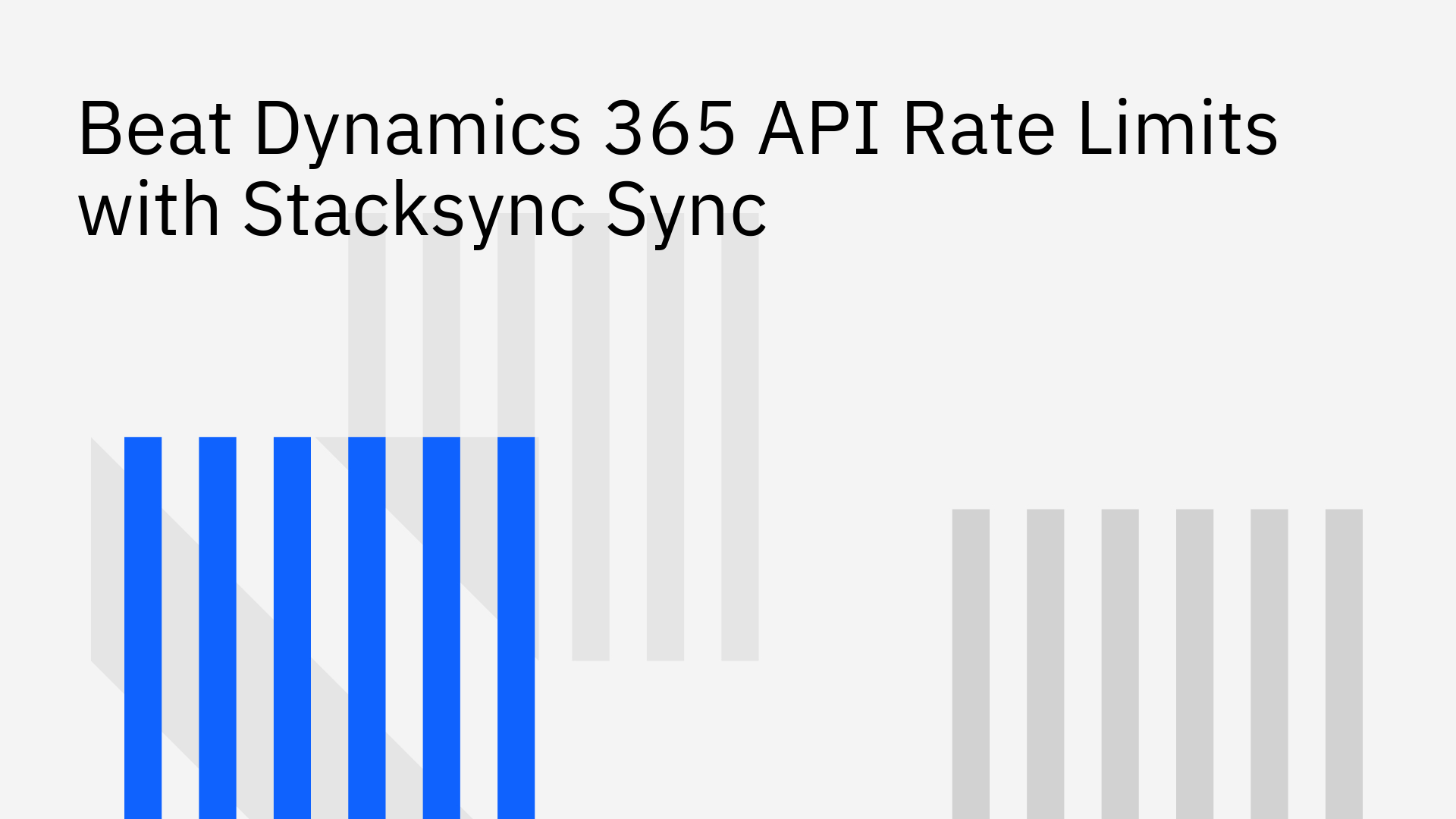
Microsoft Dynamics 365 is a formidable CRM, yet its operational efficacy can be constrained by a critical variable: API rate limits. These restrictions on the number of API requests an application can make within a specific timeframe are a frequent source of operational friction. For businesses reliant on high-volume data synchronization, these limits introduce significant roadblocks, manifesting as throttled performance, failed data transfers, and disrupted workflows.
This article presents a definitive, verifiable solution. We will demonstrate how Stacksync provides the control mechanisms necessary to manage and overcome these limitations, enabling smooth, reliable, real-time data synchronization with Dynamics 365.
To formulate an effective solution, we must first analyze the problem's parameters. Microsoft implements API request limits across the Power Platform to maintain service stability and ensure equitable resource allocation among all tenants [2]. These are not arbitrary figures but calculated thresholds for system health.
The specific limits, which dictate the number of requests a single user can make within a rolling 24-hour window, are contingent on the user's license type. For example, paid licensed users are typically allocated up to 40,000 requests per 24 hours [4]. Each action, from a data query to a record update, counts towards this allocation.
When an application's request volume surpasses the defined threshold, the Power Platform API responds with a 429 Too Many Requests error, indicating that the service is actively throttling the application to protect system integrity [6].
The business impact of this throttling is immediate and severe:
In response, development teams are often forced to engineer complex, custom retry logic and back-off mechanisms to navigate these throttling events—a time-consuming and error-prone process that consumes valuable engineering resources [7].
Stacksync is an integration platform engineered to manage high-volume, real-time data synchronization without triggering API limits. Our architecture employs a multi-faceted strategy to operate intelligently within the constraints of platforms like Dynamics 365, providing a robust Microsoft Dynamics 365 two-way sync integration.
Stacksync provides a native control mechanism that allows users to precisely govern the flow of API calls. From the dashboard, you can define the maximum number of requests Stacksync will make per second or minute. This empirically-tested approach ensures your integration never surpasses the API threshold you set, even during high-volume data transfers. This feature gives your engineering team deterministic control over API consumption, transforming a variable risk into a managed constant. You can review how this feature works in our documentation on managing API rate limits.
Stacksync's sync engine optimizes every API call. When numerous records are modified simultaneously, our platform intelligently batches these updates into a smaller number of highly efficient API calls. This methodology significantly reduces the total API request volume without compromising real-time performance. For initial loads or large-scale backfills, Stacksync can dynamically parallelize processes, increasing data throughput without overwhelming the Dynamics 365 API endpoint.
In contrast to inefficient polling methods that continuously query for updates and waste API calls, Stacksync operates on an event-driven model. API calls are only executed when a data event—a creation, update, or deletion actually occurs. When your data is static, Stacksync makes zero API calls. This preserves your API allocation for moments of genuine activity, ensuring maximum efficiency and cost-effectiveness.
Implementing this control system is a straightforward, three-step procedure designed for efficiency and ease of use.
With Stacksync, you can move from reactive error handling to proactive management of your data integrations.
Ready to eliminate throttling and guarantee data consistency? Start your free 14-day trial and experience a more reliable integration architecture.
Managing API limits is just one component of a robust integration strategy. Stacksync provides a holistic solution with additional benefits.
Our commitment to data protection is uncompromising. Stacksync is compliant with SOC 2 Type II, GDPR, and HIPAA, offering secure connection options like SSH tunneling and VPC peering to meet stringent enterprise security requirements. Our platform architecture ensures your data is always protected. You can learn more about our comprehensive approach on our security page.
Stacksync delivers true bi-directional synchronization, keeping data perfectly consistent across all connected systems in milliseconds. This real-time capability is the foundation for mission-critical operational use cases, from sales and finance alignment to customer support.
Built to handle millions of records from day one, Stacksync is an architecture that scales with your business. You can confidently grow your data volume without needing to manage or re-architect any underlying infrastructure.